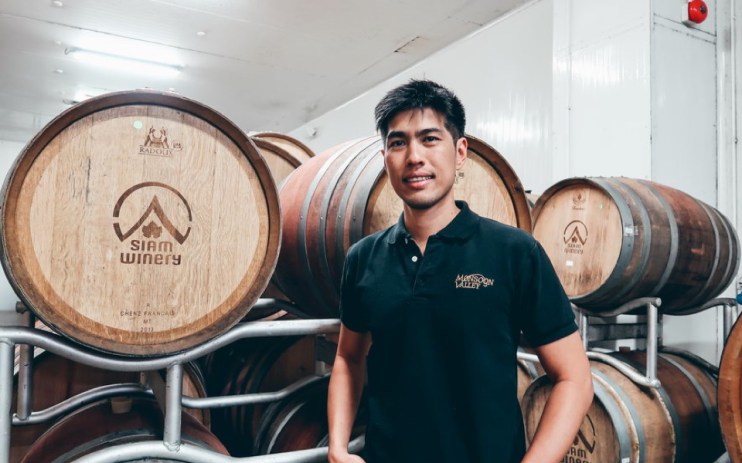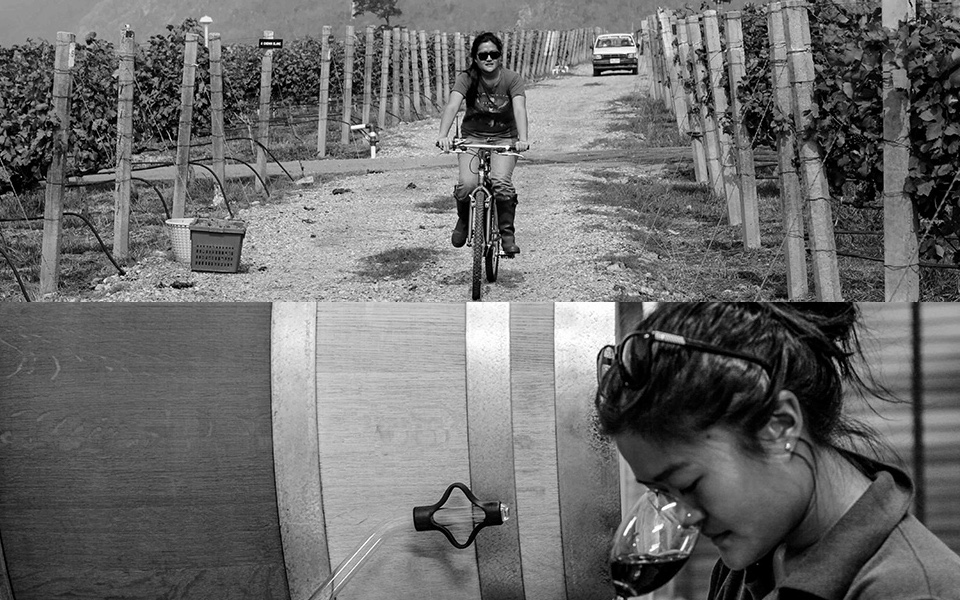Drinking around the world: The rise and rise of Thai wine

Producing over a million bottles a year, Thailand is a little known but increasingly adept wine producing region. Vines have been planted there since the 1960s despite the humid tropical climate and the Thai portfolio is now considered by many as the ultimate in “New Latitude wines”.
Thailand’s dominant grape variety known as the Malaga Blanc – probably the Spanish grape Teneron, known in France as Panse de Provence – was introduced in the 1600s as a gift from a French diplomat on behalf of Louis XIV to King Naraj.
Cardinal, Black Muscat (Black Hamburg) and the locally propagated Pokdum – a cross between Muscat and Golden Queen – are often used in the production of Thai wines, along with the usual international suspects; Shiraz, Chenin Blanc, Sauvignon Blanc, Viognier, Colombard, Verdelho, Sangiovese and Tempranillo. To give you a hint of how nascent this market is, however, the Thai Wine Association founded as recently as 2004 and the oldest still-functioning vineyard in Thailand is Chateau De Loei, near Phu Reua in the north-east of the country, whose wines were first vinified in 1995.
In 1986, Charlerm Yoovidhya, whose family was involved in the founding of Red Bull energy drinks, built a facility at Samut Sakhon to produce the best-selling SPY “wine cooler” brand, whose drinks are made from sparkling wine and mineral water. To make undiluted wine more suited to spicy oriental foods, in 2001 Yoovidhya opened vineyards in Tab Kwang in Khao Yai and at Baan Khork Chang near Hua Hin beach. The Monsoon Valley label, created in 2003 – now the best-selling in south east Asia – today makes Cuvee de Siam, a Shiraz rose and a Chenin Blanc late harvest dessert wine, as well as premium reds and whites.
Monsoon Valley, south-west of Bangkok, is the centre for production. “Historically viticulture and wine production have been predominantly focused on countries 30-50 degrees north or south of the equator,” says chief winemaker Suppached Sasoman.
“Now with the latest in wine-making know-how, an understanding of tropical viticulture and a specialist team, the Siam Winery is producing a selection of award-winning wines at 13 degrees north of the equator.”
A biochemistry graduate of Kasetsart University, Suppached gained a masters degree in Viticulture and Wine Making from Ecole Supérieur d’Agriculture D’Anger in France, Università Cattolica del Sacro Cuore (Italy) and Universidad Politécnica de Valencia (Spain). He has since worked in New Zealand’s Marlborough, French Languedoc and German Pfalz.
“The mystical and sacred Naga, the symbol of abundance, is believed to protect the hills, valleys, and the vineyards of the Monsoon Valley region. Thai wines are the result of not just skill and passion, but also the benevolence of the land. From the loamy sand and slate to the balmy ocean breeze and the surrounding hills, the watchful presence of the Naga ensures the quality of our wines.”
Recommended pairings for Monsoon Valley White include Thai green curry, while Monsoon Valley Red pairs with Pad Kra Pao stir-fry with holy basil, and the rose is recommended with spicy salad. Monsoon Valley Wines are available in the UK in restaurants including Thai Square, Patara, Nipa Thai at the Royal Lancaster Hotel, Farang and Somsa.

GranMonte, in the Asoke Valley at the foothills of the country’s third largest national park at Khao Yai, three hours from Bangkok, is home to Thailand’s first and so far only female winemaker. Nikki Lohitnavy, the daughter of founder Visooth, studied oenology in Adelaide and worked for the Brown Brothers and Wolf Bass as well as stints in France, South Africa, Portugal and at Venezuela’s only vineyard and winery, Bodegas Pomar in Estado Lara.
Due to climate change, the 34-year-old is now consulted by winemakers across the world eager to adapt to wine-making in higher temperatures and rainfalls. Her wines are exported worldwide and served in Michelin-star restaurants including Bangkok’s Le Normandie Mandarin-Oriental and J’Aime by Jean Michel Lorain.
“All our wines, every label and every bottle, is award-winning,” she says. “Ten years ago, when people heard about Thai wine, they’d go ‘Oh god, is it drinkable?’ I don’t want to try it!’. I think I have changed the scene of wine in Thailand a little bit.”
Perhaps the most unique thing about Thai wine is that you can order a vintage date from the future. Some bottles of Thai wine are labelled according to the Buddhist calendar (the 2560, for instance), so you can tell your dinner guests that the wine you’re serving has already aged for 543 years.